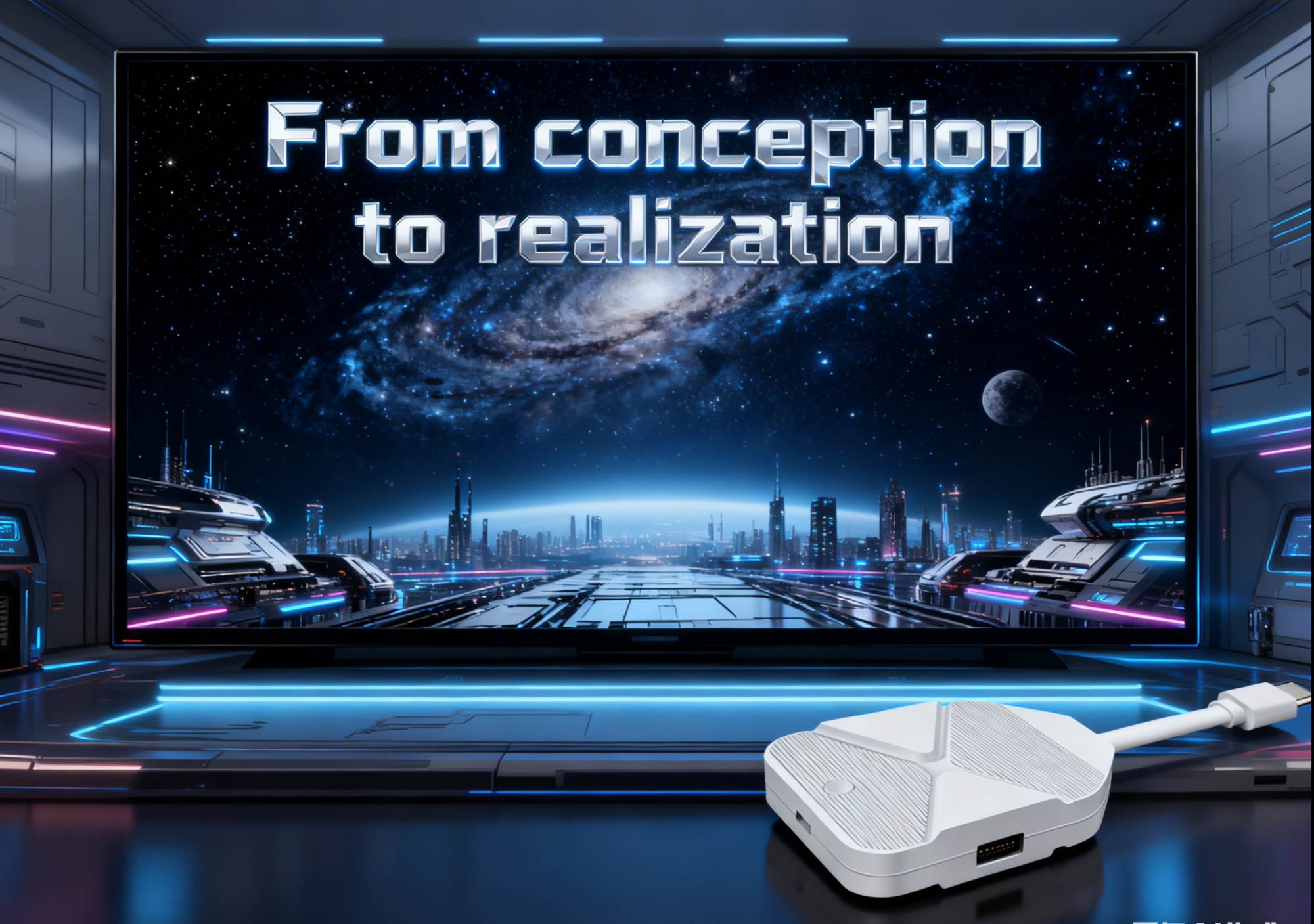When upgrading your home entertainment setup, you still face a familiar yet reconsidered dilemma: choose a Smart TV or a TV Box? Now that streaming services are the primary way to watch content and 4K is commonplace, the choice is no longer just about picture quality – it’s about flexibility, long-term value, and whether your device can adapt to evolving apps and technologies. This article breaks down the key factors to help you decide between these two popular options.
Contents
Why a TV Box Might Be the Smarter Choice
2.1 The Price Reality of Smart TVs
2.2 The Cost-Effectiveness of TV Boxes
3.1 The Performance Limitations of Smart TVs
3.2 The Performance Edge of TV Boxes
4.1 The App Limitations of Smart TVs
4.2 The App Freedom of TV Boxes
5.1 The Usage Limitations of Smart TVs
5.2 The Portability Advantage of TV Boxes
6.1 The Obsolescence Dilemma of Smart TVs
6.2 The Upgrade Flexibility of TV Boxes
Real-World Scenarios: Which Fits Your Lifestyle?
When upgrading your home entertainment setup, you still face a familiar yet reconsidered dilemma: choose a Smart TV or a TV Box? Now that streaming services are the primary way to watch content and 4K is commonplace, the choice is no longer just about picture quality – it’s about flexibility, long-term value, and whether your device can adapt to evolving apps and technologies. This article breaks down the key factors to help you decide between these two popular options.
Why a TV Box Might Be the Smarter Choice
While both Smart TVs and TV Boxes can stream content, their underlying logic differs significantly. A Smart TV integrates apps and connectivity directly into the television, offering an out-of-the-box, convenient experience. However, this “all-in-one” design hides potential downsides: a higher price tag, rapidly evolving hardware, and a lack of flexibility when new apps or formats emerge.
In contrast, a TV Box acts like an external “smart brain” for any TV with an HDMI port. These compact devices, typically running Android or a dedicated streaming OS, can transform even an older “dumb” TV into a smart entertainment center. It’s akin to upgrading your TV’s “software” without replacing the screen. For users, this modular design offers clear advantages in cost, customization, and lifespan.
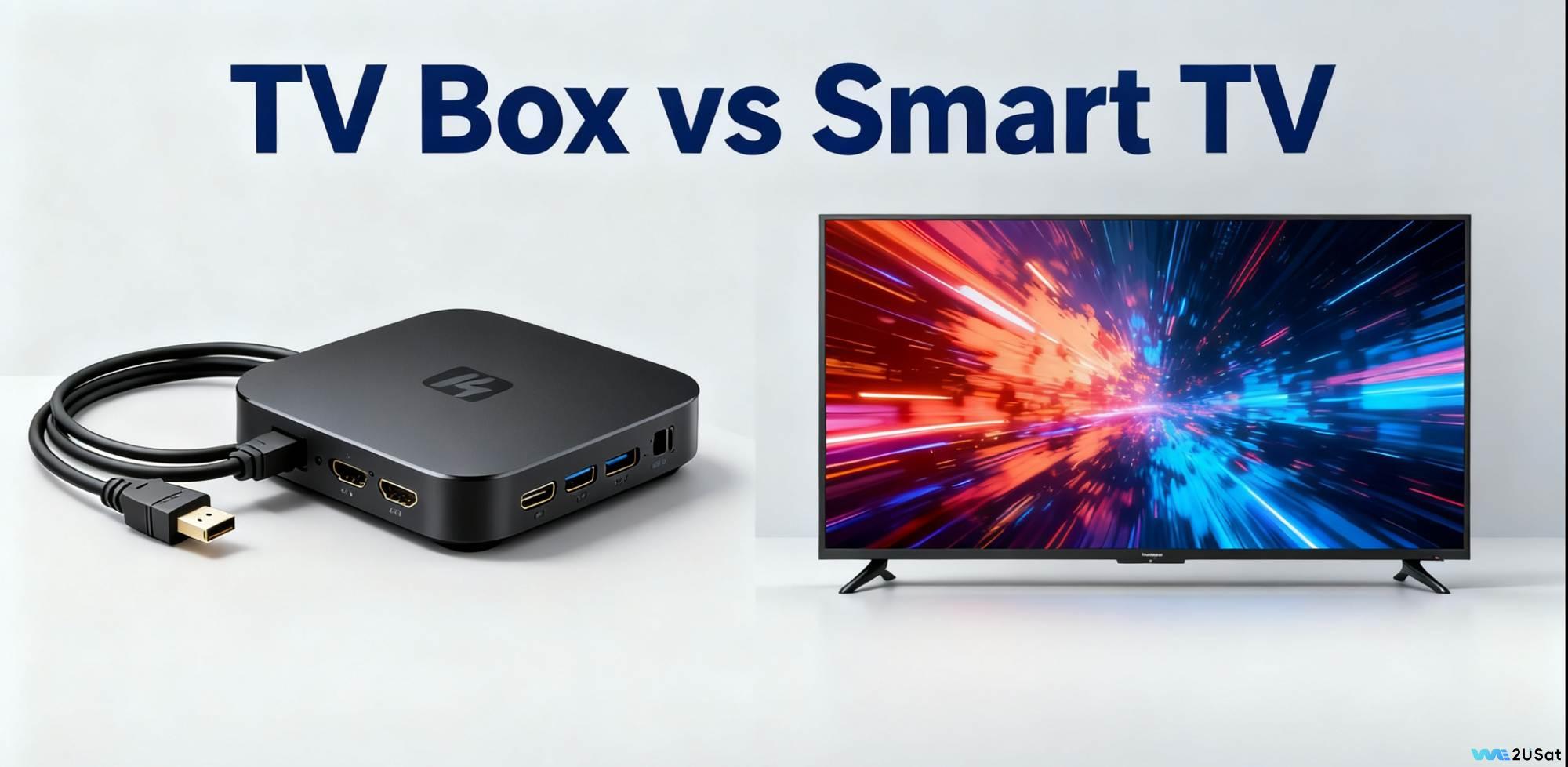
Cost Comparison
The Price Reality of Smart TVs
The upfront cost for a Smart TV is high. Mainstream brands like LG and Samsung often price their 55-inch 4K Smart TVs between $500 and $900; if you opt for superior OLED models, the price can exceed $2,000. This price includes both the screen and smart features, but in 3-5 years, when those smart features become outdated and sluggish, you’re faced with replacing the entire TV to regain a smooth experience.
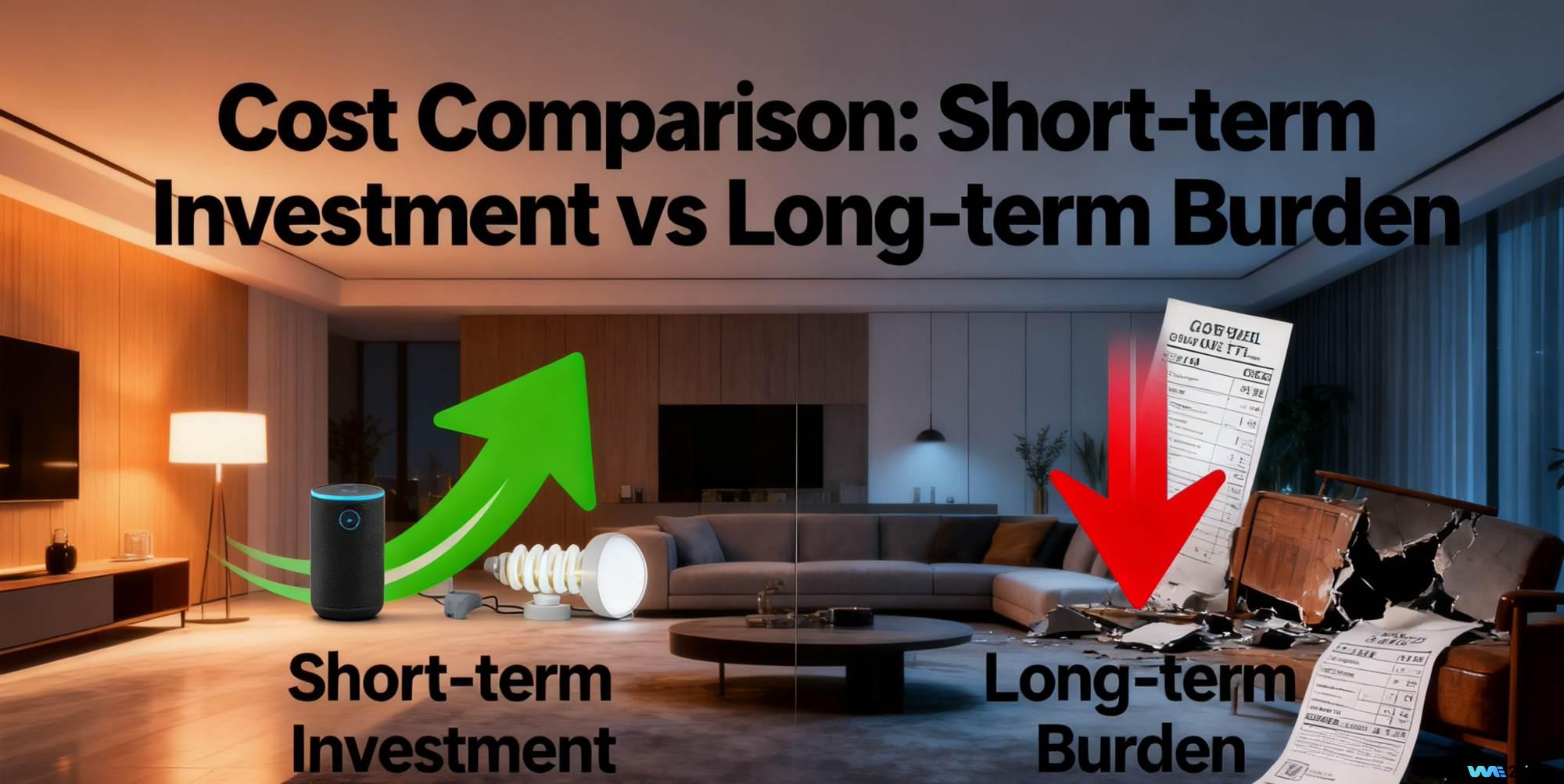
The Cost-Effectiveness of TV Boxes
TV Boxes are a highly cost-effective alternative. Entry-level models like the Roku Express or Amazon Fire TV Stick cost just $30-$60 and are sufficient for basic streaming from Netflix, YouTube, etc. Mid-range models like the VseeBox, with better processors and storage, typically cost only $100-$150 – far less than a new Smart TV. Even high-end TV Boxes supporting 4K and advanced features rarely exceed $400, still a fraction of a Smart TV’s cost.
The long-term cost difference is even more pronounced. A $150 TV box used for 3 years costs about $4 per month. Meanwhile, a $1,000 Smart TV that becomes obsolete in the same period carries a monthly cost of around $27. For households with multiple TVs, one TV Box can be moved between rooms, eliminating the need to buy a smart version for every screen and saving further.
Performance
The Performance Limitations of Smart TVs
While high-end Smart TVs have powerful processors, many mid-range models use economical hardware that struggles with subsequent system updates. A common user complaint is that Smart TVs become slower after 2-3 years, with apps loading sluggishly and interfaces lagging, issues often worsened by firmware updates. Unless you buy a premium model, the hardware can feel outdated quickly.
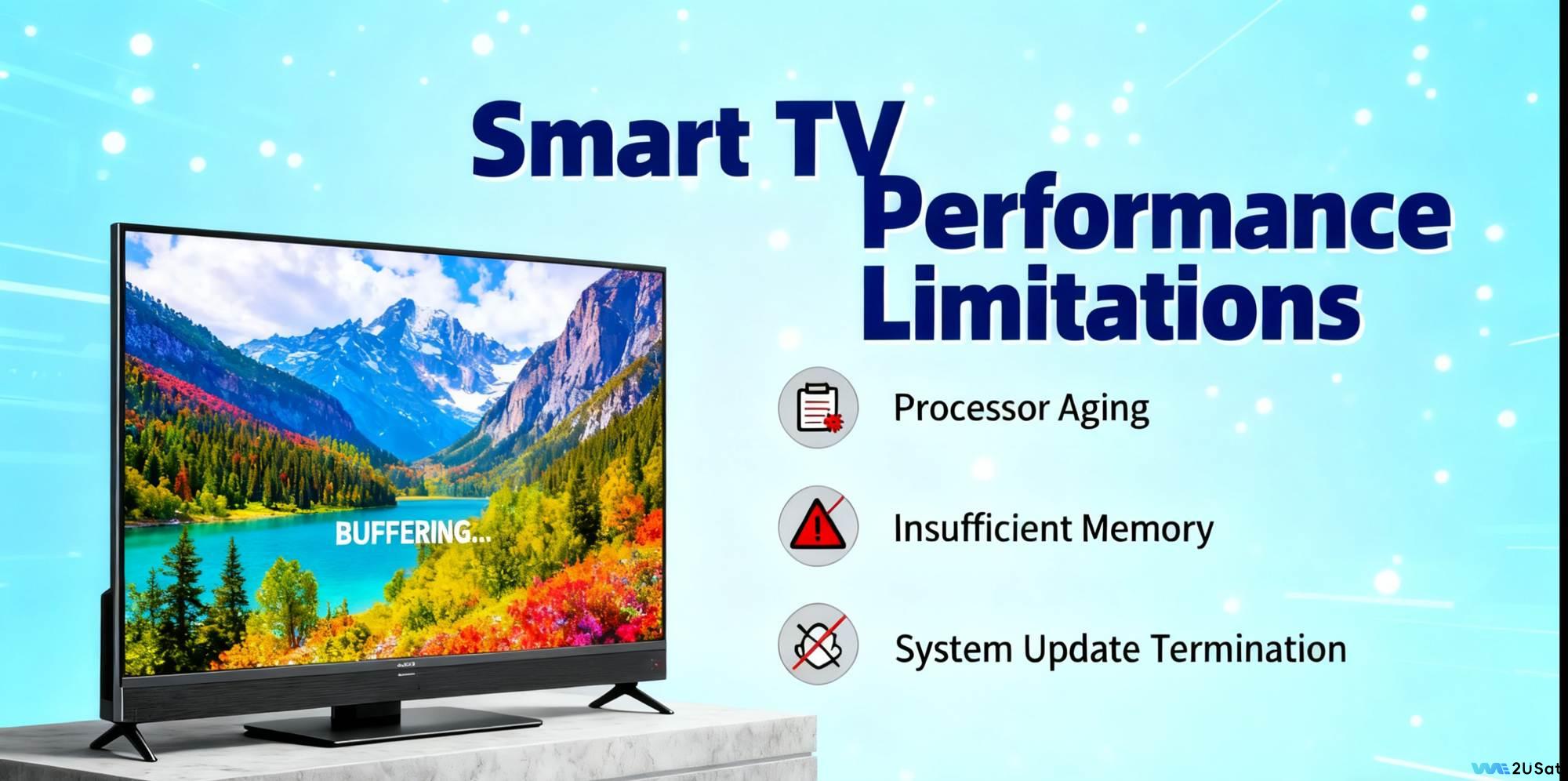
The Performance Edge of TV Boxes
TV Boxes offer greater performance flexibility. Mainstream models often come with 4GB+ RAM, quad-core processors, and dedicated GPUs capable of smooth 4K playback. Unlike Smart TVs, their operating systems are more lightweight, receive more frequent updates focused on performance optimization, and aren’t tied to specific, aging TV hardware.
Taking smart tv box user feedback as an example, the device can run Netflix, YouTube TV, and sports apps simultaneously while maintaining smooth switching without lag. This fluidity benefits from efficient memory management that controls background processes – something often lacking in the bloated OS of many Smart TVs.
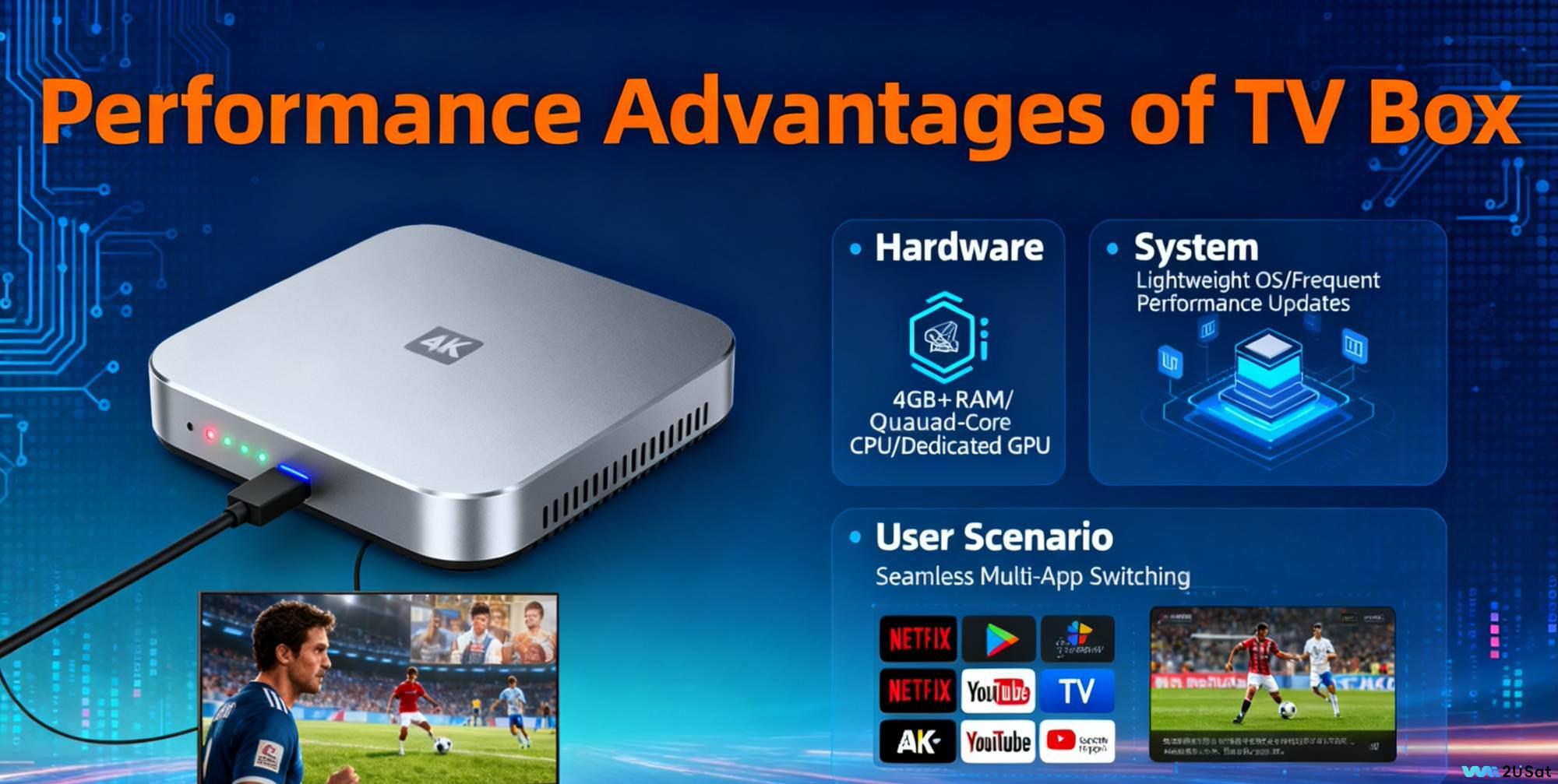
App Ecosystem
The App Limitations of Smart TVs
Most Smart TVs rely on proprietary app stores with limited selections. While major apps like Netflix, YouTube, and Prime Video are usually available, niche or international platforms often aren’t. Furthermore, app updates can be slow, and support for certain models may stop entirely after a few years.
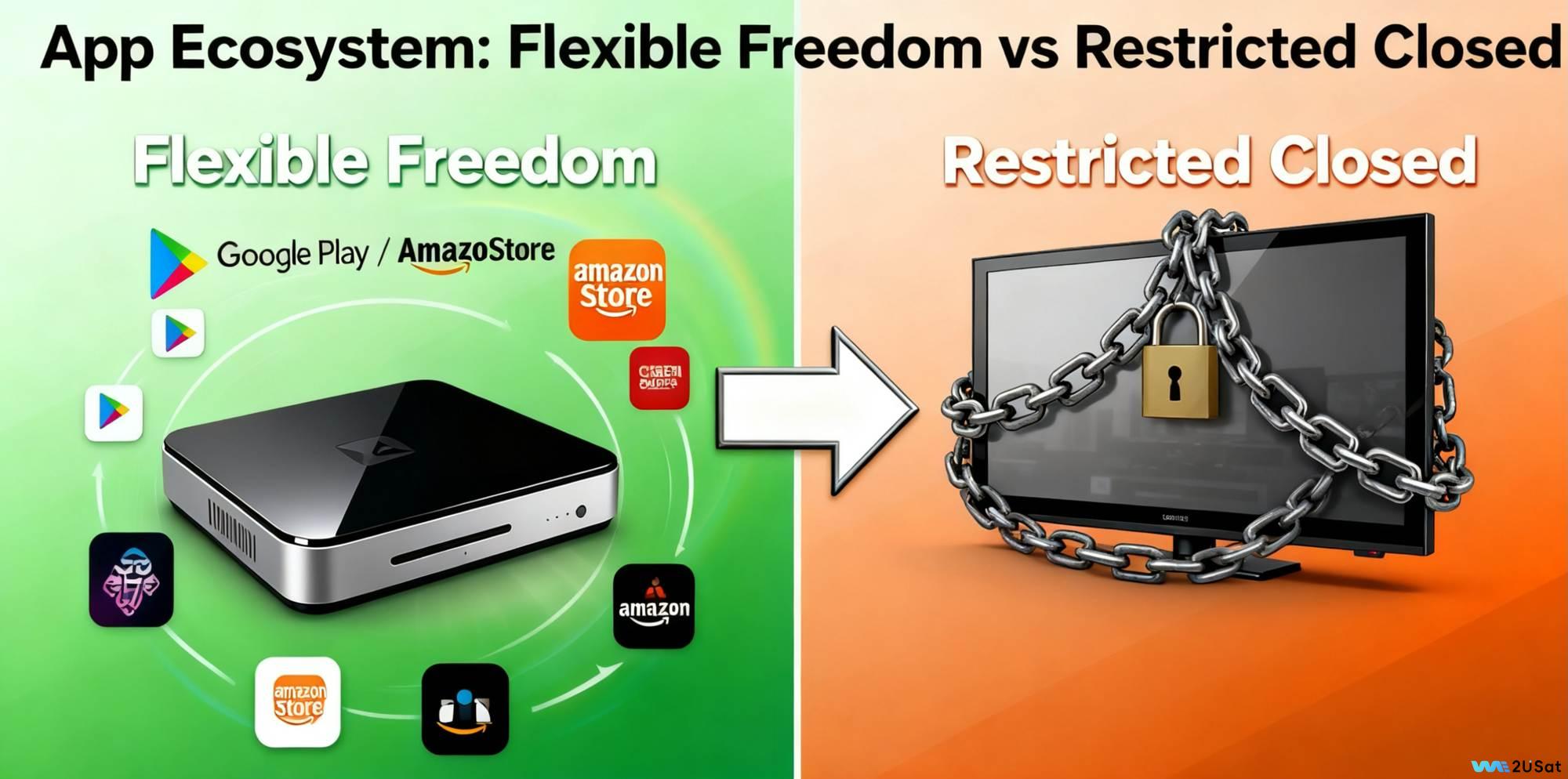
The App Freedom of TV Boxes
App flexibility is a core advantage of TV Boxes. Android-based boxes provide direct access to the Google Play Store, offering thousands of apps. Even if an app isn’t in the store, it can often be added via “sideloading” without needing to “jailbreak” the device.
This is particularly useful for users wanting to watch international content – virtually any desired app can be installed easily. It’s worth noting, however, that some Fire TV Stick users attempt to sideload third-party apps or even “jailbreak” to access more content. This practice can lead to security vulnerabilities, system instability, potential violations of service terms, and ultimately device bans or malfunctions.
Instead of relying on “jailbroken” devices, opting for an open yet secure TV Box – like one that provides direct access to a rich app library without needing risky modifications – is a safer and more reliable approach.
Portability & Versatility
The Usage Limitations of Smart TVs
Portability is an often-overlooked yet significant factor. Smart TVs are large, bulky, and fragile. Taking one on vacation or frequently moving it between the bedroom and living room is impractical.
The Portability Advantage of TV Boxes
Most TV Boxes are palm-sized, lightweight, and highly portable. Whether staying at a hotel, visiting friends, or relaxing at a summer cottage, just slip it into your bag, plug it into any TV with an HDMI port, and you have your familiar entertainment system ready. As long as there’s Wi-Fi, the advantages in flexibility and portability are clear.
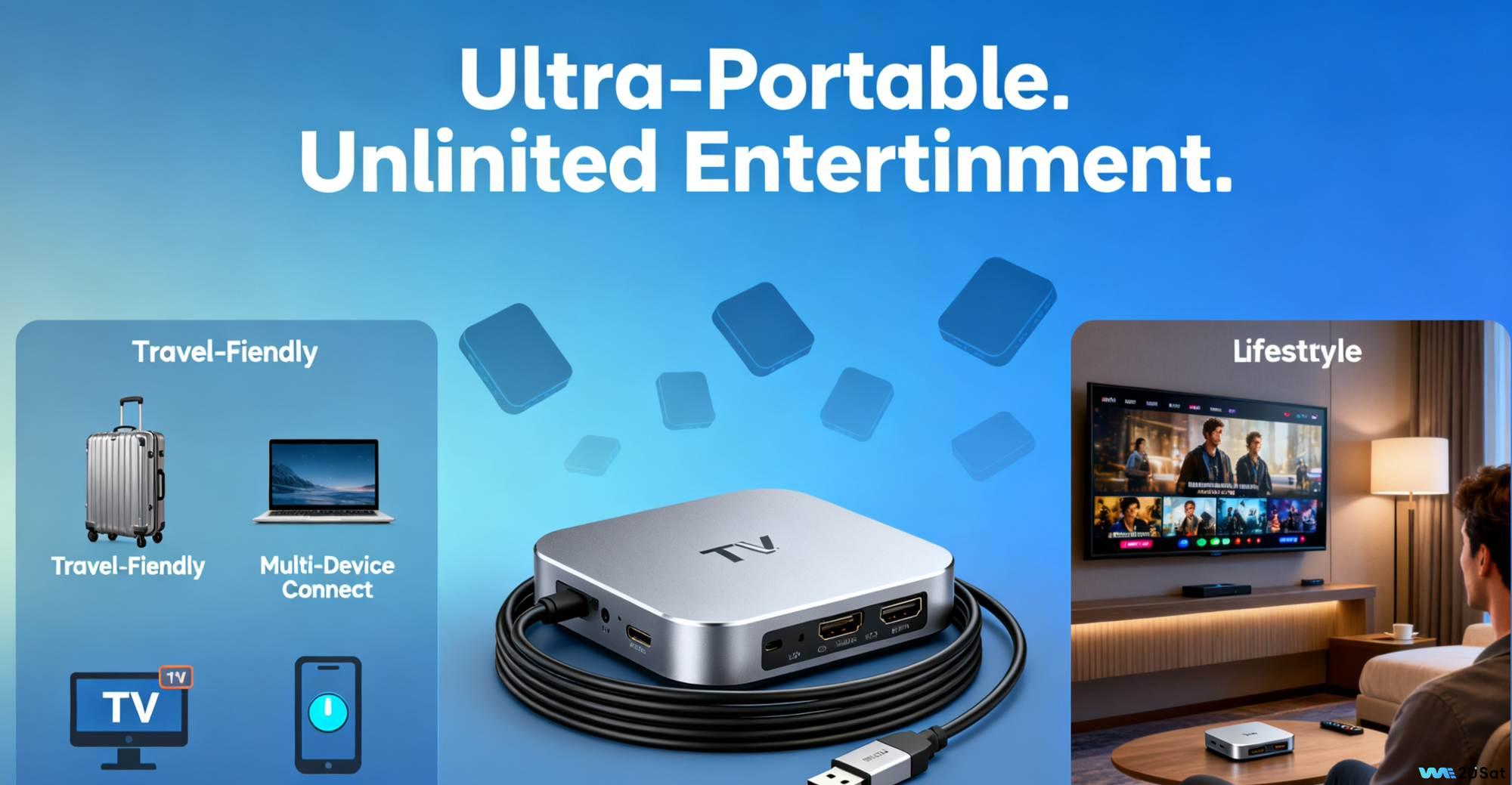
Lifespan
Click to learn "how to extend the service life of the TV box"
The Obsolescence Dilemma of Smart TVs
Even with services like LG’s webOS Re:New promising 5 years of OS updates, Smart TVs still face hardware obsolescence. The processor in a Smart TV bought in 2025 might not run new apps smoothly by 2028, and the hardware cannot be upgraded separately. This “planned obsolescence” means you might need to replace the entire TV every 5-7 years, even if the screen is perfectly fine.

The Upgrade Flexibility of TV Boxes
TV Boxes follow a “smartphone-like” upgrade logic – when new technology emerges, you simply replace the box, not the TV. A TV Box from 2025 can be swapped for a new $150 model in 2028, instantly giving your existing TV the latest processor and features.
Many users also repurpose old TV Boxes for secondary spaces like bedrooms or kitchens, creating a multi-room entertainment system at a minimal cost. This sustainable approach appeals both to budget-conscious users and those embracing eco-friendly consumption.
Real-World Scenarios: Which Fits Your Lifestyle?
A TV Box is likely better for you if you:
● Already own a good-quality HD or 4K TV that still works well.
● Frequently travel, move houses, or need to adjust your entertainment setup flexibly.
● Want the freedom to install various apps or IPTV services.
● Are budget-conscious and prefer not to overspend on entertainment devices.
Click to learn about "Tips for Choosing the Best TV Box"
A Smart TV might be more appealing if you:
● Are planning to buy a new TV anyway and prefer a simple setup with fewer cables.
● Value a clean, “clutter-free” aesthetic with no extra devices.
● Rarely move your TV and don’t need niche or international apps.
● Are willing to pay a premium for an “integrated, convenient” experience.
That said, even after choosing a Smart TV, many users eventually buy a separate TV Box to overcome the Smart TV’s inevitable performance and app support limitations. Especially for a smoother streaming experience, greater control, or access to unsupported content, a TV Box like the VseeBox becomes a necessary addition.

summary: Flexibility is Key
For most consumers, choosing a TV Box offers better value, flexibility, and longevity than a Smart TV. For just $100-$150, you can unlock a wealth of content, extend the life of your current TV, and avoid the high cost of Smart TVs. Models like the VseeBox strike a balance between performance and price, supporting mainstream streaming while allowing easy access to niche apps, often with the help of community installation guides.
While Smart TVs still hold appeal for those seeking simplicity or in immediate need of a new television, their limitations and “obsolescence risk” make them a less ideal choice for most. In an era of rapidly changing content and viewing habits, the modular, adaptable nature of a TV Box ensures your entertainment system stays current without unnecessary expense.








